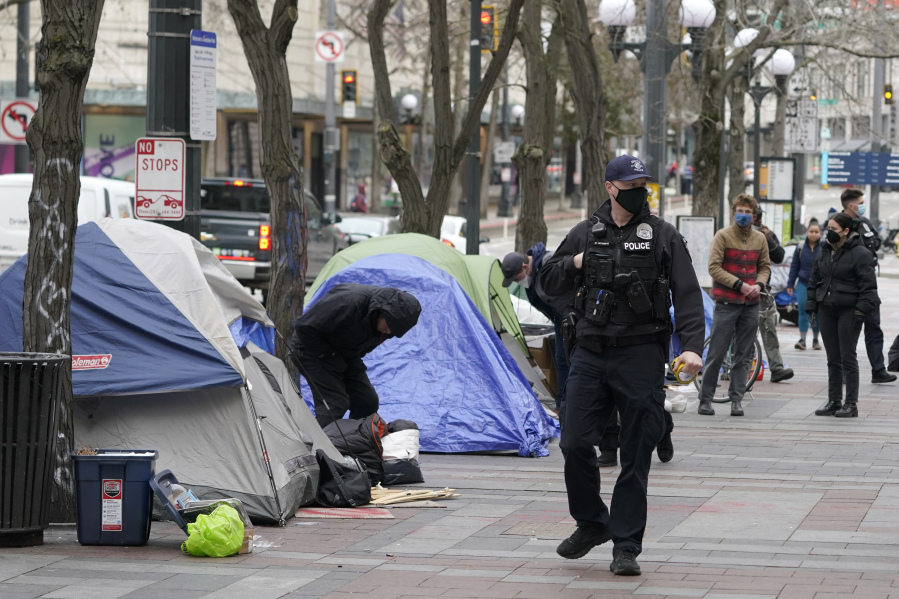SEATTLE — Washington’s homeless population is on the rise, according to a recent report by the U.S. Department of Housing and Urban Development, and it’s largely driven by Seattle and King County.
The number of Washingtonians who are unsheltered, in vehicles or in temporary shelter grew by 10 percent from 2020 to 2022, increasing by 2,288 people. Slightly more than 70 percent of that growth came from Seattle and King County, according to part one of HUD’s 2022 Annual Homelessness Assessment Report.
Local experts, though, say those numbers should be treated with some skepticism because much of its data comes from the annual Point-In-Time count, which is known for being an undercount. The count is conducted across the country on a single night in January to get a snapshot of how many people are homeless in the United States. Because of that, and because it relies on people to count by hand the number of people they see living unsheltered, researchers accept that its results are imperfect.
Aware of these flaws, King County’s Department of Community and Human Services ran a cross-system analysis across several homelessness data sources to estimate that 45,300 people experienced homelessness during 2019 and 40,800 people experienced homelessness at some point in 2020. Anne Martens, spokesperson for the King County Regional Homelessness Authority, said Washington’s Department of Commerce most recently estimated that at least 53,500 people experienced homelessness in King County in 2022.
“That number is unacceptable,” Martens said.
Roughly 582,500 people were found to be experiencing homelessness in the United States during the 2022 count — a 0.3 percent increase. Some places saw more extreme percentage increases than Washington, though their overall numbers are still smaller.
The homeless population in Austin, Texas, grew by 72 percent from 2015 to 2022, and Phoenix saw homelessness increase by more than 60 percent over the past seven years.
For comparison, Seattle and King County’s homeless population grew by 32 percent during that same time period.
“I mean, we’re still having a big issue in Washington and California, but there are other cities that are starting to see more pressures,” said Gregg Colburn, a University of Washington professor.
Across the state’s six continuums of care, which are local planning bodies responsible for coordinating homeless services in a geographic area, Vancouver and Clark County saw the biggest percentage increase over the two-year period. The homeless population there grew by nearly 31 percent from 916 in 2020 to 1,197 in 2022.
“The level of need continues to outstrip available resources,” according to Tedd Kelleher, housing policy director for the Washington Department of Commerce, which oversees the state’s response to homelessness.
Nationally, some groups saw homeless rates decrease anywhere from 6 percent to 12 percent, including families with children, unaccompanied youths and veterans.
In Washington, homelessness rates decreased for minors and young adults ages 18 to 24, but grew for adults over age 24.
Kelleher pointed to the rising rental and housing costs in Washington as a “major driver of the increase in homelessness statewide.”
Colburn, who co-wrote a book that uses data to show how housing costs and availability are the most significant predictor of homelessness, seconded the sentiment.
“We continue to not have sufficient housing for people with moderate to low incomes,” Colburn said.
And even before the pandemic, Washington faced a homelessness crisis, Colburn added.
“We already had a big problem in 2020,” he said.
Within one year, median home prices in Washington grew 23.9 percent from 2020 to 2021, according to the Washington Office of Financial Management. The last decade saw significant price increases with median home costs more than doubling from $223,900 in 2011 to $560,400 in 2021.



